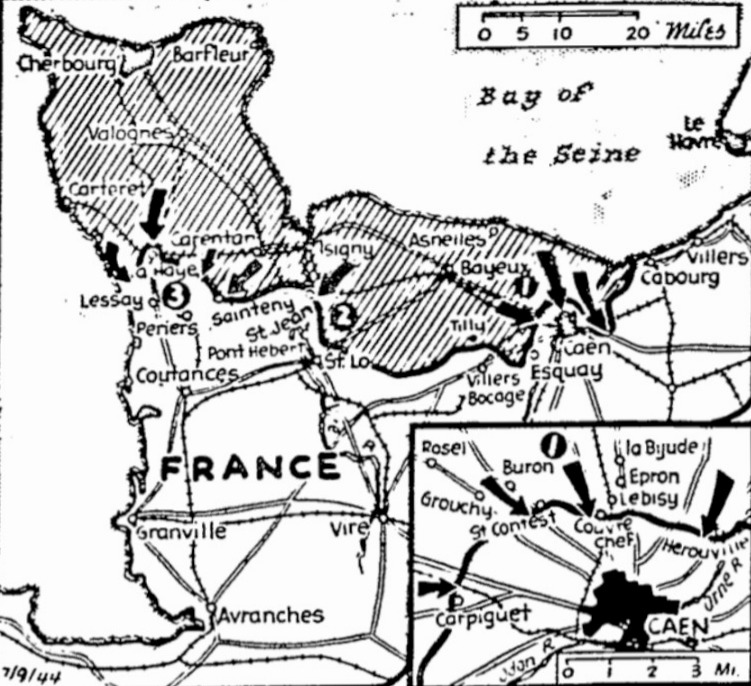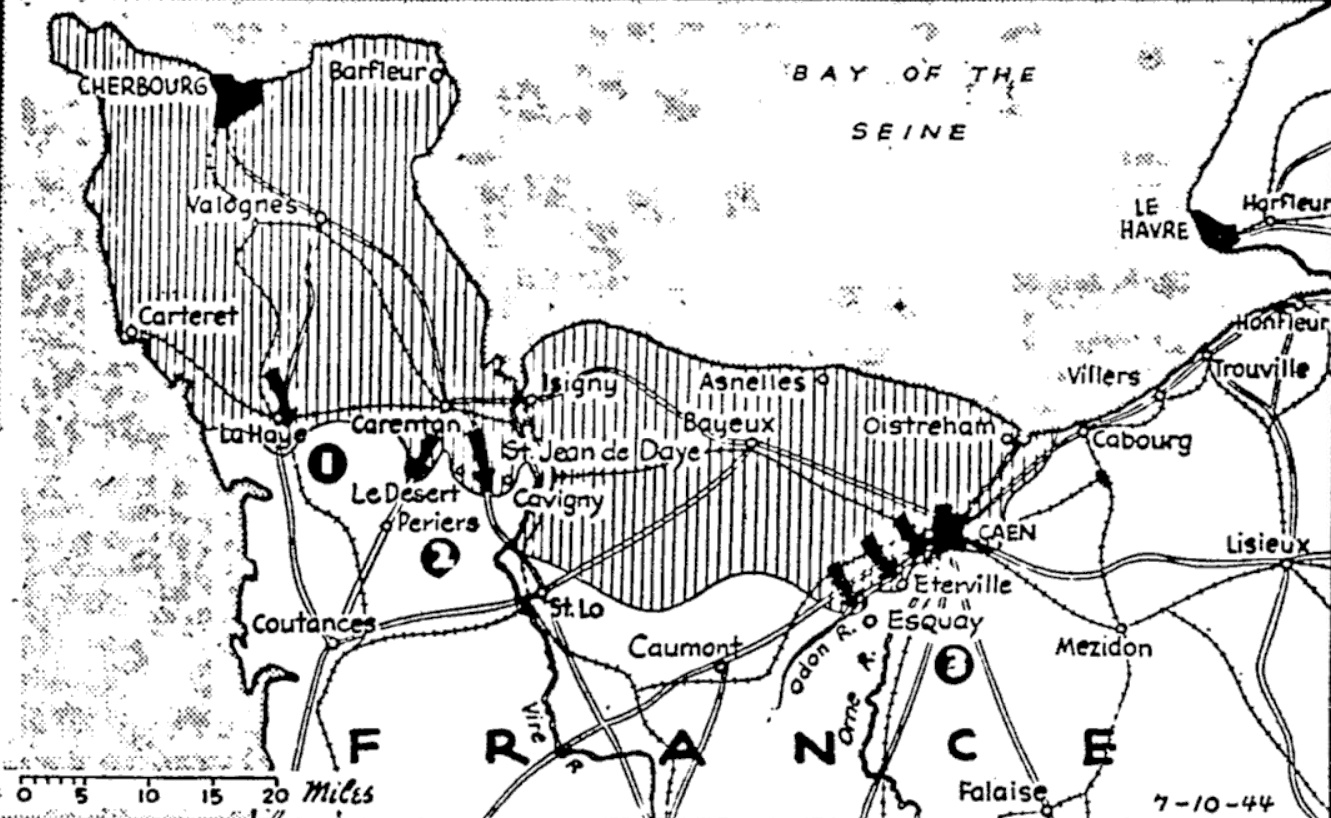U.S. fliers lash enemy at Caen
U.S. heavies hammer Vienna oil plants
By Walter Cronkite, United Press staff writer
London, England –
U.S. heavy and medium bombers pounded German troop concentrations and gun batteries at Caen and robot bomb installations in the Pas-de-Calais area today as more than 500 Italy-based Fortresses and Liberators fought their way through heavy flak and fighter opposition to hit oil refineries at Vienna and targets in Hungary.
The fleet of 500 bombers, escorted by Lightnings and Mustangs, struck at three oil refineries in the Vienna basin, three fighter fields covering Vienna, and a Hungarian airdrome at Veszprem, 65 miles southwest of Budapest.
Refineries hit
Among the targets was the Floridsdorf oil refinery in the northern suburbs of Vienna, which is Austria’s largest crude oil distillation plant. The Creditul Minier refinery at Korneuburg, seven miles north of Vienna, and the Fanto Vösendorf refinery six miles south of Vienna, were also hit.
Meanwhile, 8th Fighter Command Mustangs, Thunderbolts and Lightnings stalked the Luftwaffe on airdromes throughout France and dive-bombed railroad targets during the day.
Wreck 21 planes
At least 21 German planes were destroyed on the ground by bombing and strafing fighters.
The Lightning group shot up 11 locomotives, 50 railroad cars and a flak tower. While these attacks were carried out, more than 250 Flying Fortresses and Liberators of the 8th Air Force attacked enemy robot bomb installations in the Pas-de-Calais area, and U.S. medium bombers joined the furious fight for Caen.
Escorted by Thunderbolt fighters, the flying artillery laid a barrage before Caen with the loss of one Marauder from flak. They encountered no enemy aircraft over the immediate battle area.
Stream over straits
The attack in support of ground troops came as Southeast England coastal observers reported a steady procession of heavy and medium bombers crossing the straits toward the continent. Their destination was not known immediately.
RAF heavy bombers just before dawn today laid 2,300 long tons of bombs on the defenders of Caen, and the U.S. mediums continued the pressure by daylight. The tonnage dropped on the embattled Germans in the first eight hours of the offensive was probably already near the 3,000 figure.
Other Marauders during the morning corked two more German transportation bottlenecks. They reached inland to smash one railway bridge at Nogent-le-Roi, which crosses the Eure 70 miles southwest of Paris, and another over the Loire River at Saumur.
Today’s attack on the robot bomb installations near Pas-de-Calais came after it was revealed that Lancaster bombers had smashed one of the enemy’s largest flying bomb supply depots, at Saint-Leu-d’Esserent, near Paris, and that RAF Mosquito bombers hit Berlin and a synthetic oil plant in Germany’s Ruhr Valley with two-ton blockbusters.
Strong forces of Thunderbolts, Mustangs and Lightnings escorted the heavy U.S. bombers as they pounced at least seven bomb sites in northern France. Most of the targets were visible, although some formations encountered bad weather over the area.
Meet strong opposition
The British bombers, which carried out the night raid on robot bomb bases at Saint-Leu-d’Esserent, north of Paris, encountered strong aerial opposition from German fighters and intense ground fire.
Although the individual losses were not listed, the Air Ministry announced that 33 bombers were missing from the raids on Saint-Leu-d’Esserent, the Ruhr and Berlin.
As the weather cleared over the Channel, more than 1,000 planes headed across the coast after hundreds of four-engined Lancasters struck into the outskirts of Paris before dawn in another attack on German communication lines.
Hit railyard
The railyard at Vaires in the eastern outskirts of Paris was singled out by the Lancasters for the pre-dawn operations and returning pilots said the whole target area was covered with thick smoke.
Another RAF contingent hit flying bomb installations in northern France last night, as the Germans continued sending the robot weapons into southern England. Although Allied aerial attacks on the bomb bases have been reported in northern France, the Daily Herald reported the Germans were also launching the pilotless planes from Belgium.
1,100 heavies attack
The U.S. Strategic Air Force disclosed that more than 1,100 Flying Fortresses and Liberators were used in the raids on synthetic oil plants, aircraft factories and other important targets in 11 localities in the Leipzig area yesterday.
The heavy bombs and escorting fighters shot down 114 German planes during the attacks, the largest bag of enemy aircraft since May 19 when 125 were downed over Berlin. The Americans lost 36 bombers and six fighters.
It was announced at Rome that 51 German planes were shot down yesterday by Italian-based heavy bombers and fighters during raids on synthetic oil refineries at Blechhammer and Silesia.
Other Allied planes also hit the railyards at Zagreb, in Yugoslavia, and carried out widespread raids throughout northern Italy. In all the operations yesterday, 24 Allied bombers and three other planes were lost.

